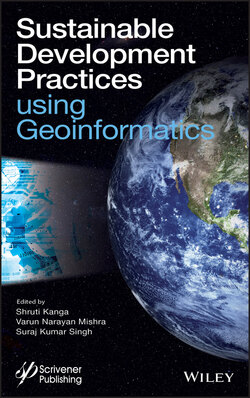Читать книгу Sustainable Development Practices Using Geoinformatics - Группа авторов - Страница 19
1.4.1 Pattern of LULC in Barasat
ОглавлениеThe temporal images of study area were classified in six classes with the help of Maximum Likelihood algorithm. The classification scheme of Land Use/Land Cover (LULC) includes the classes (1) built-up area, (2) built-up with green space, (3) agricultural fallow, (4) bare land, (5) green space, and (6) water bodies (Figure 1.3). A drastic change is observed in the ratio of built-up area and built-up area with green vegetation in the center of the city. Moreover, the aggregation and expansion in built-up area changes rapidly after 2011.
The total area of the Barasat municipality is about 34.5 km2 as obtained by the digitized vector layer. The observed change in built-up area is ranging from 6.79% in 2001 to 29.23% in 2017, and simultaneously, there is highest decrease observed in green space ranging from 27.99% in 2001 to 11.50% in 2017 (Table 1.2). Built-up area with green space is increasing, although at a slower rate than the pure built-up area, which implies that the municipality or concerned agency for greenery in urban space is not giving serious thought to the importance of green space in urbanization. There is decrease in surface area of water body and reduction in number of water body within the study area, which may lead to water crisis in near future.
Figure 1.3 Land Use/Land Cover map of Barasat municipality (2001, 2011, and 2017).
Table 1.2 Area statistics of LULC in Barasat municipality.
| Class Name | Area in % | ||
|---|---|---|---|
| 2001 | 2011 | 2017 | |
| Bare land | 16.70 | 13.39 | 8.25 |
| Water body | 2.40 | 2.36 | 1.47 |
| Agricultural fallow | 7.92 | 4.75 | 3.74 |
| Built-up area | 6.79 | 16.38 | 29.23 |
| Built-up with green space | 38.20 | 40.79 | 45.80 |
| Green space | 27.99 | 22.33 | 11.50 |
